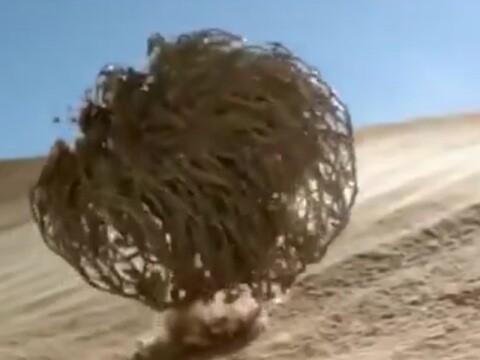Sahara Bush, one of the miracles of nature, symbolizes resurrection in dry and barren desert environments. ‘Resurrection Plant’, which has lived up to its name by waiting for a drop of water for a century, offers the miracle of life in the heat and dry lands of the desert. It mysteriously survives in the most barren and driest parts of the desert.
While other plants store water, this plant can survive almost completely without water. In drought, water potential drops to 3% of normal and at this point when viewed from the outside a dry bush It looks like. However, when the desert rains come, these plants bloom just as programmed. suddenly comes to life and return to their normal lives.
For a hundred years in the hot sands of the Sahara It defies the winds by taking the shape of a ball, protects its seeds. However, when it rains, these balls open, spread their branches into the water and release their seeds into the soil. Completing their development within a week or two These plants dry out and die due to sunlight. However, they ensure the continuation of the species and contribute to the cycle of nature.
Characteristics of Sahara Shrub or Resurrection Plant
Also known as Sahara shrub or resurrection plant Selaginella lepidophyllais a vascular plant species belonging to the Selaginella genus. This special plant can survive in arid desert environments for many years and can survive in extreme conditions even when only 3% remains. To adapt to difficult living conditions, the plant gradually begins to dry out. Its leaves turn brown and curl, causing it to gives a ball-like appearance and minimizes all metabolic activities.
When the drought becomes severe, its roots separate from the soil and become free, drifting on the dry ground under the influence of the wind. “tumbler plant” It passes into the state known as . No matter how dry or damaged it is, its leaves retain their ability to absorb water and revitalize themselves even after years, thanks to their special structure, increasing the plant’s chance of survival even after its death.

Sahara shrub reproduces by spores and does not contain seeds or flowers in structure. The plant, which drifts freely in arid environments, opens its curling branches when exposed to a moist environment, allowing it to spread its spores. In this way, shed spores can survive in a humid environment.
Selaginella lepidophylla is also known as Stone flower, Jericho rose, Resurrection plant, Dinosaur plant, Doradilla. However, this plant should not be confused with Anastatica. Both species are known as resurrection plants and form tumblers. referring to the biblical city of Jericho “The rose of Jericho” They share the name.

Sahara Shrub Revival
This plant goes into a dormant state in the absence of water. In this process, trehalose, a crystallized sugar, is synthesized to prevent damage to tissues and cells. Dissolved salts accumulate in plant tissues as water evaporates. Trehalose replaces evaporated water Prevents salts from damaging tissues and reduces the risk of death from excessive salinity. Selaginella lepidophylla also uses substances that have the same function as trehalose, such as betaine.
When water is given to plant tissues, sugar crystals dissolve and the plant’s metabolism comes out of paralysis. In this process, seemingly dead leaves turn green and it opens.

sahara shrub, It has also been used as an herbal medicine. The infusion is made by steeping a tablespoon of dried ingredients in hot water. The resulting tea is used as an antimicrobial to treat colds and sore throats. In Mexico, Saharan Shrub is sold as a diuretic. Additionally, women drink the water in which the plant has been soaked to facilitate childbirth. The speed at which the plant opens in water is an indicator of whether birth will be easy or difficult. It is interpreted as .
To join our WhatsApp group CLICK!



